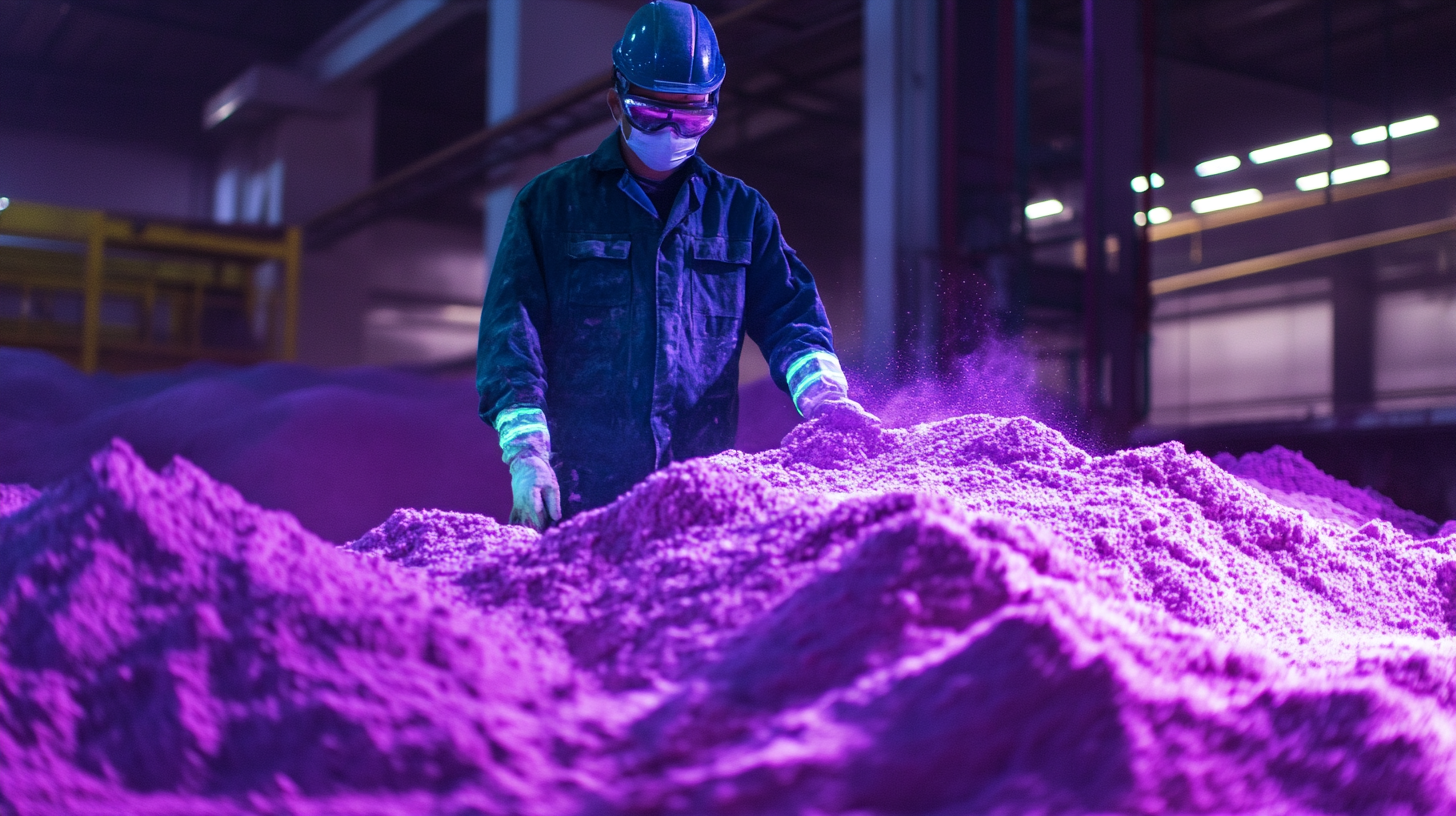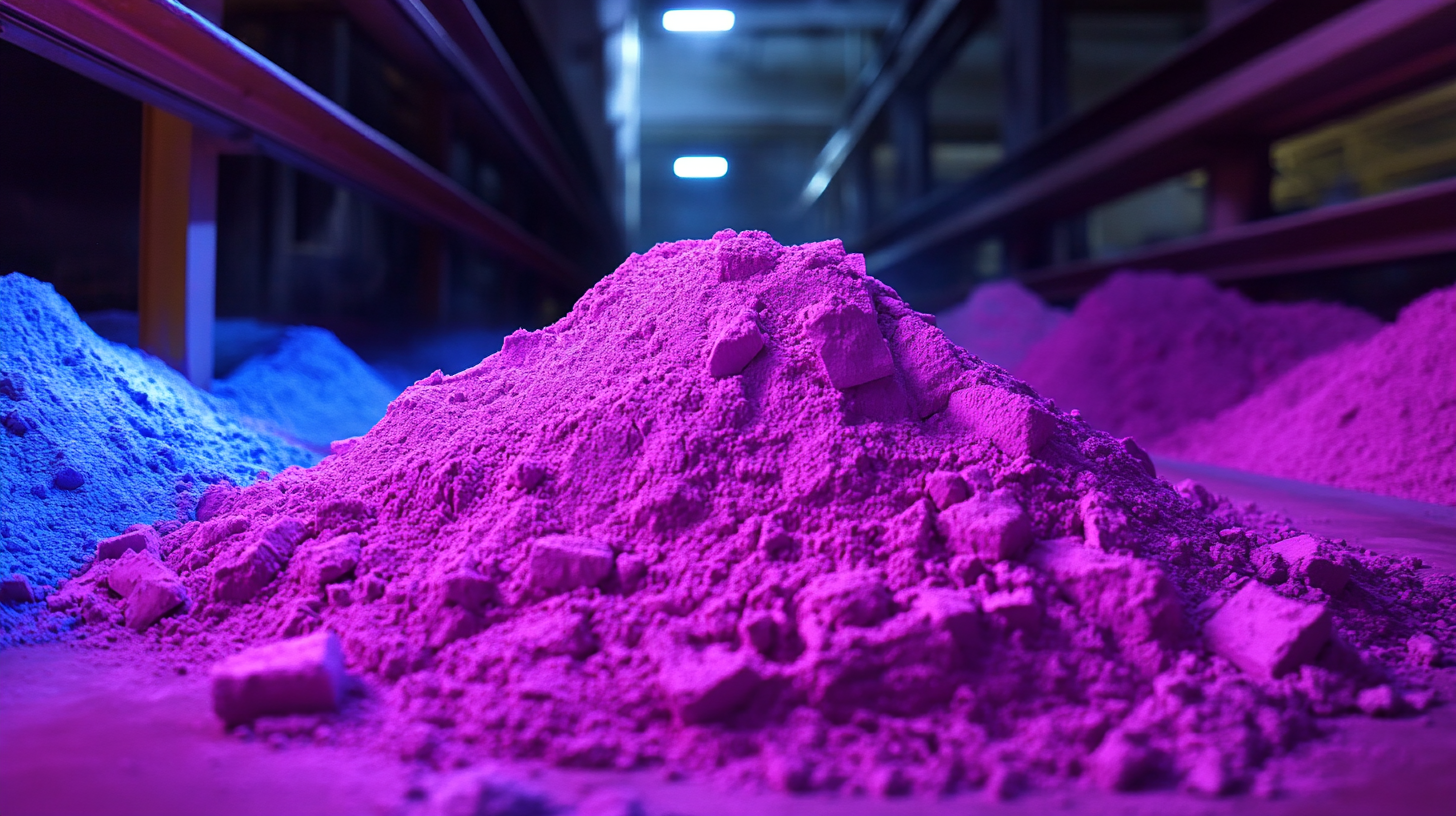In recent years, the ongoing trade tensions between the United States and China have posed significant challenges for the Chinese manufacturing sector. Despite these hurdles, China's manufacturing industry has demonstrated remarkable resilience, particularly in niche markets like fluorescent powder production. According to a report by Markets and Markets, the global fluorescent powder market is projected to reach USD 10.1 billion by 2026, growing at a CAGR of 7.3%. This growth is driven by increasing demand across various applications, including lighting, displays, and coatings. As manufacturers adapt to changing regulatory landscapes and tariffs, they are finding innovative ways to optimize production and maintain competitive pricing. This blog will explore how Chinese manufacturers are not only weathering the storm but are also positioning themselves as leaders in the fluorescent powder market amidst these tariff challenges, showcasing the strength and adaptability of the industry.

Chinese manufacturing is showcasing remarkable resilience in the face of ongoing tariff challenges imposed by the United States. The latest economic data indicates that despite a significant drop in exports to the U.S. and a softening in consumption, China's industrial output has surged, registering a 6.1% growth in April compared to the previous year. This resilience reflects the adaptability and strength of China's manufacturing sector as it navigates shifts in the global economy and adjusts to tariff-induced pressures.
Furthermore, recent surveys have revealed improvements in manufacturing activity, indicating burgeoning confidence among factories. Even as the U.S. tariffs bite, many Chinese firms are not only sustaining their production levels but also experiencing increased profits driven by local and international demands. This scenario underlines a crucial aspect of China's economic landscape: the ability to innovate and evolve despite external challenges, which is essential for maintaining growth and reinforcing its position in global markets.

Chinese manufacturing continues to thrive despite ongoing US-China tariff challenges, a testament to the resilience and innovative strategies employed by companies within the sector. According to a report by the China Council for the Promotion of International Trade, nearly 70% of Chinese manufacturers have adopted advanced production techniques and digital transformation to enhance their operational efficiency. This shift not only mitigates the impacts of tariffs but also positions them competitively in the global market.
Furthermore, collaboration between manufacturers and technology firms has led to significant advancements in product quality. For instance, the adoption of best fluorescent powders, which are crucial in sectors like lighting and displays, exemplifies this trend. Research from the International Market Analysis Research and Consulting Group indicates that the fluorescent pigments market is expected to grow by 5.3% annually, underscoring the demand for high-quality production. By investing in research and development, Chinese companies are not only overcoming trade barriers but also setting industry standards, thereby solidifying their place in the global supply chain.
The ongoing U.S.-China trade tensions have posed significant challenges to many sectors, yet the Chinese manufacturing industry is displaying remarkable resilience. Central to this growth is the increasing adoption of innovative materials like Best Fluorescent Powder. According to industry reports, the global market for fluorescent pigments is projected to reach over USD 2.75 billion by 2024, driven by their diverse applications in coatings, plastics, and textiles. This trend highlights the importance of advanced materials in enhancing product quality and expanding market reach, which is crucial amid tariff challenges.
Best Fluorescent Powder, in particular, plays a pivotal role in boosting manufacturing growth by improving the performance and aesthetic appeal of products. Its unique properties permit higher visibility and brighter colors, making it an essential component in consumer goods, automotive finishes, and safety signage. A report by Grand View Research indicates that the increasing demand for visually appealing and functional products is expected to fuel a compound annual growth rate (CAGR) of 5.4% from 2021 to 2028 in the fluorescent pigment sector. As manufacturers adapt to evolving consumer preferences and regulatory demands, integrating high-quality fluorescent powders will be key to sustaining growth and innovation in a competitive landscape.

The ongoing trade tensions between the US and China have created a complex landscape for global supply chains, particularly in the manufacturing sector. As tariffs are imposed on various goods, companies are forced to reevaluate their sourcing strategies and production processes. This is particularly true for industries relying heavily on specific materials like fluorescent powders, which are essential for a range of applications, including lighting and displays. The impact of these tariffs is significant, leading businesses to seek alternative suppliers or invest in local production to mitigate costs.
Moreover, the effect of tariffs extends beyond immediate financial implications. Companies must navigate a web of logistical challenges, including increased shipping times and the potential for reduced product quality when sourcing from different suppliers. For instance, manufacturers that have historically depended on high-quality fluorescent powders from China now face pressure to find comparable materials that meet their standards. This shift not only influences their bottom line but also alters the dynamics of global trade. As businesses adapt to these challenges, the landscape of manufacturing continues to evolve, showcasing resilience in the face of adversity.
| Year | Market Value (in Billion $) | Growth Rate (%) | Supply Chain Disruption Index | Comments |
|---|---|---|---|---|
| 2019 | 30 | 5.0 | 2.1 | Base year with stable supply chain |
| 2020 | 28 | -6.7 | 3.5 | Pandemic impact on global logistics |
| 2021 | 35 | 25.0 | 2.0 | Recovery and increased demand for fluorescent powders |
| 2022 | 37 | 5.7 | 1.8 | Stable supply despite tariffs |
| 2023 | 40 | 8.1 | 1.5 | Continued growth and market adaptation |
The enduring trade tensions between the U.S. and China have created a complex landscape for manufacturers, yet the Chinese manufacturing sector continues to demonstrate resilience and adaptability. According to a report by McKinsey & Company, despite tariff increases and supply chain disruptions, Chinese manufacturers have invested significantly in technology and automation, leading to a productivity increase of approximately 20% over the past few years. This shift not only enhances efficiency but also positions Chinese firms to compete more effectively in the global market, particularly in specialized sectors like the production of fluorescent powders.
As manufacturers seek to sustain growth amidst these challenges, trends indicate a strong move towards innovation and sustainable practices. The China National Chemical Information Center forecasts a growing demand for high-performance materials, including fluorescent powders, driven by advancements in industries such as electronics and energy-efficient lighting. By 2025, the market for these materials is expected to reach $1 billion, reflecting a CAGR of over 10%. Moving forward, companies that can leverage technological advancements while maintaining a focus on sustainability will likely emerge as leaders in this evolving marketplace.
This chart illustrates the growth of Chinese manufacturing in key sectors, particularly in fluorescent powder production, despite ongoing trade tensions with the US. Data is sourced from recent industry reports.
